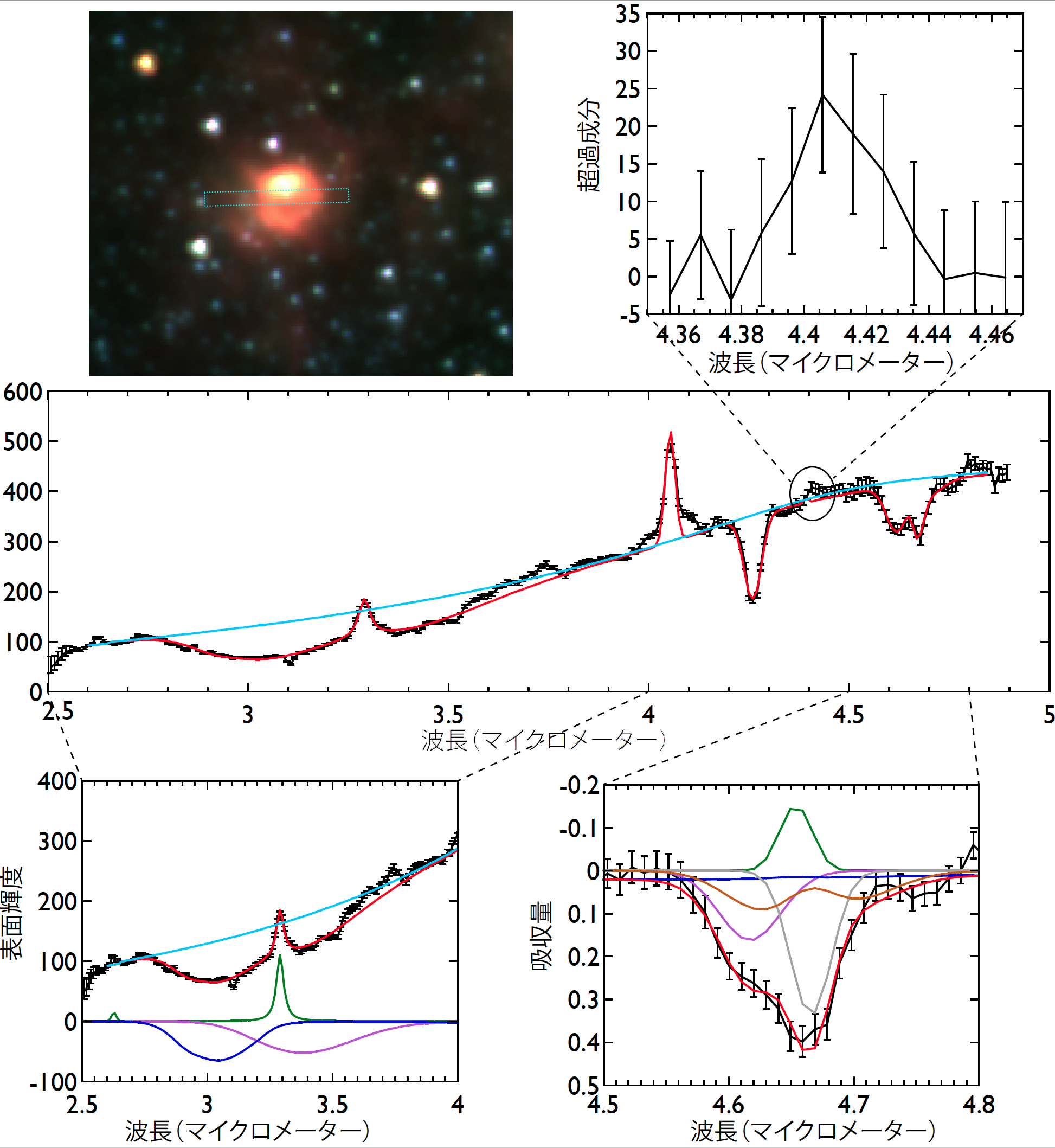Disclaimer: machine translated by DeepL which may contain errors.
The Elemental Fluxes Leading to the Present World
Takashi Onaka (Professor Emeritus Professor, The University of Tokyo )
Tatsuki Sakon, Assistant Professor, Department ofAstronomy

![]()
In space, about half of heavy elements such as carbon and oxygen are solid particles as small as 0.1 micrometer. In contrast, more than 90% of nitrogen, an element that constitutes amino acids, the basic element of life, exists as gaseous atoms or ions in space. Although many kinds of amino acids have been detected in the samples collected from the asteroid Ryuguu, which are thought to have been produced in the outer solar system in regions with lower temperatures, it is not fully known how they were produced. The process by which nitrogen-containing organic matter is produced in space is an important issue that is linked to the birth of life. In this study, our group has performed a detailed analysis of the infrared spectra around a young, not well-known, high-mass star called AFGL2006 by the Japanese infrared satellite AKARI, which was launched more than a year ago, and found a broad absorption band at 4.62 micrometers (∼1.5 arcmin), which is consistent with the UV intensity of cyanate ions (OCN- ) in the ice. The broad absorption bands exhibited by cyanide ion (OCN-) ices have a good relationship with the UV intensity. This result is the first observational evidence suggesting that UV radiation is strongly involved in the formation of nitrogen-containing low-temperature materials.
Deuterium, on the other hand, is one of the first isotopes of hydrogen to be produced in the universe, and should slowly decrease in abundance during subsequent fusion reactions. The missing deuterium is thought to be incorporated into some kind of interstellar matter. In space, polycyclic aromatic hydrocarbons (PAHs), which contain large amounts of hydrogen and are composed of benzene rings, are ubiquitous. At low temperatures, the hydrogen in PAHs is replaced by deuterium, which may serve as a deuterium hideout; the carbon-hydrogen stretching vibration of PAHs is observed at 3.3 micrometers, and this vibration should move to around 4.4 micrometers when hydrogen is replaced by deuterium. However, the 4.4 micrometer band has not been detected in most previous observations. In this study, we found an excess emission at 4.4 micrometers in the cyanide ion detection data, which correlates well with the carbon and hydrogen vibrations at 3.3 micrometers. This is clear observational evidence that deuterium is incorporated into PAHs.
The special environment around AFGL2006, the target of the observation, where a low-temperature region of ice coexists with intense ultraviolet radiation from the star, may have contributed to the present results. Further observations of similar objects with the James Webb Space Telescope, which is currently in operation, are expected to lead to further research in the future.
The results of this research were published in The Astrophysical Journal, 941, 190 (2022) by T. Onaka et al. in collaboration with Associate Professor Takashi Shimonishi of Niigata University.
(Press release, December 24, 2022)
Published in Faculty of Science News, May 2023
Communicating to Faculty Research Students on the Frontiers of Research>



